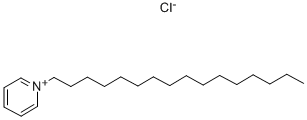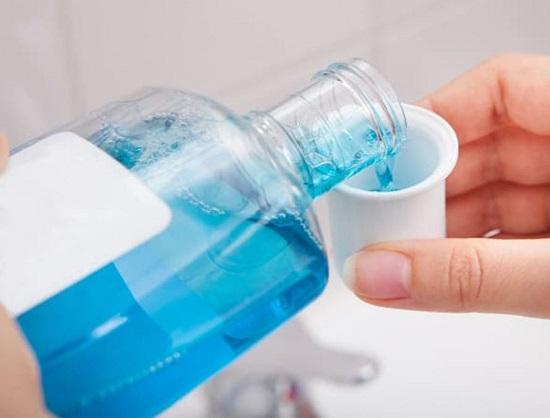Cetylpyridinium chloride: Applications in Processing Meat Products
Cetylpyridinium chloride (CPC) is a surface-active QAC commonly added to toothpaste, mouthwash, and cough drop formulations due to its ability to impede attachment of plaque-forming bacteria to tooth enamel (McDonnell & Russell, 1999 ; Oyarzabal, 2005) .
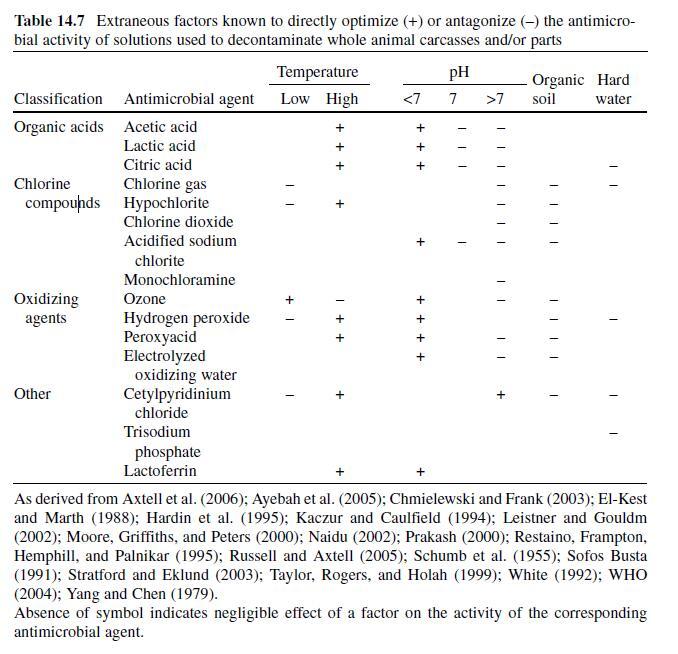
Applications The efficacy of CPC as a decontamination fluid has been scientifically validated, and available data indicate that approved levels of CPC ( Table 14.5 ) are capable of significantly reducing levels of pathogens encountered at multiple stages of meat and poultry processing (Belk, 2001 ; Huffman, 2002 ; Sofos & Smith, 1998 ; Sofos, Kochevar, Bellinger et al., 1999). Cecure tm is a patented CPC solution (pH 7.1) developed by Safe Foods Corporation (North Little Rock, AR), and approved for use on fresh, processed, and RTE meat products (Safe Foods Corporation, 2008) ( Table 14.5 ).
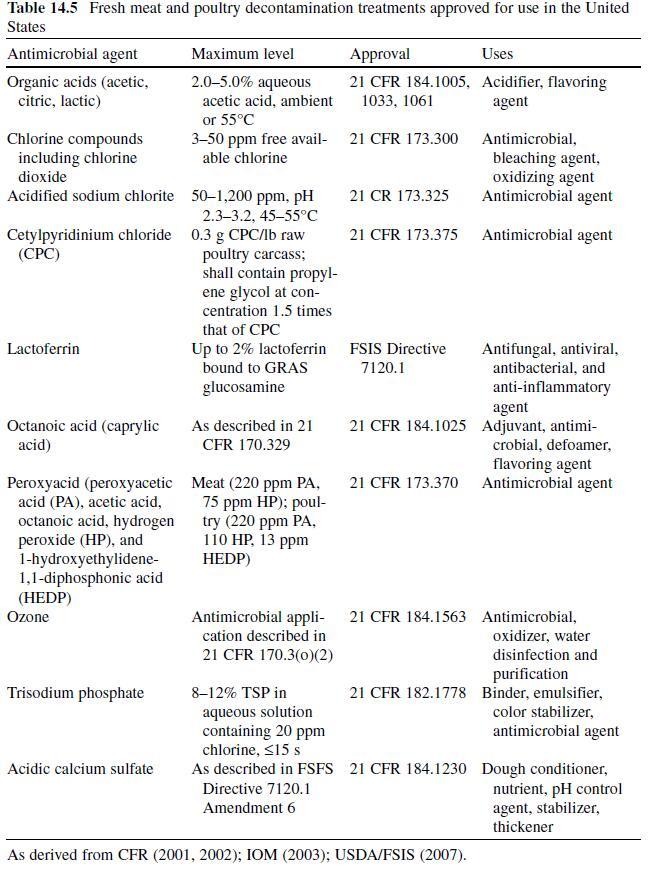
Prior to its approval as an antimicrobial, Ransom et al. (2003) compared the ability of CPC (0.5%) and other approved intervention technologies to inactivate E. coli O157:H7 populations on inoculated beef carcass tissue samples. CPC induced greater reductions (4.8 log CFU/cm 2 ) than 2.0% lactic acid, 0.02% acidified sodium chlorite, 2.0% acetic acid, 0.02% peroxyacetic acid, 1.0% lactoferricin B, or 0.001% acidified chlorine (reductions of 3.3, 1.9, 1.6, 1.4, 0.7, or 0.4 log CFU/cm 2 , respectively); reductions in pathogen counts on CPC-treated lean beef tissue were also greater than other treatments, although differences were less extreme (Ransom et al., 2003) . Although applications of a 0.1% CPC solution were ineffective against C. jejuni attached to poultry skin, higher concentrations of CPC (0.5%) reduced pathogen counts more effectively than 10% trisodium phosphate (TSP) or 1.0% acidified sodium chlorite solutions (Arrit, Eifert, Pierson, Sumner, 2002) . Following longer exposures (30 s vs. 3–10 min), CPC was also more effective than TSP or acidified sodium chlorite against C. jejuni on poultry skin (Arrit et al., 2002) .
In another study, 0.1% CPC preinoculation treatments (ambient temperature, 10 min) were sufficient to inhibit the attachment of S. Typhimurium to poultry skin (Breen et al., 1995) , indicating that very low concentrations of CPC may mitigate future contamination events. During simulated chilling (4°C) of beef carcass tissue, CPC (0.1% or 0.5%) added to the water spray (1 min, every 30 min for 10 h) reduced initial non acid-adapted E. coli O157:H7 counts (5.1 log CFU/cm 2 ) to below the level of detection after 10 h and acid-adapted cells were no longer detected after 24 h (Stopforth et al., 2004) . Wateronly spray treatments reduced populations by about 1 log CFU/cm 2 (Stopforth et al., 2004) , while activity of CPC and other antimicrobial solutions (e.g., lactic acid) decreased against acid-adapted inocula of the pathogen. When applied to RTE polish sausages inoculated with L. monocytogenes (3–7 log CFU/g), CPC treatments (1%, 25°C, 30 s, 20 psi spray) immediately reduced pathogen counts (by 1–3 log CFU/g) and inhibited survivors for 42 days (0°C and 4°C) (Singh et al., 2005) ; no negative impacts on product color or texture were observed.
You may like
Related articles And Qustion
Lastest Price from Cetylpyridinium chloride manufacturers
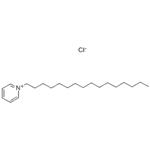
US $0.00/kg2025-11-21
- CAS:
- 123-03-5
- Min. Order:
- 1kg
- Purity:
- 98%
- Supply Ability:
- Customise

US $1.00/PCS2025-04-21
- CAS:
- 123-03-5
- Min. Order:
- 1PCS
- Purity:
- 99%
- Supply Ability:
- 10 mt
